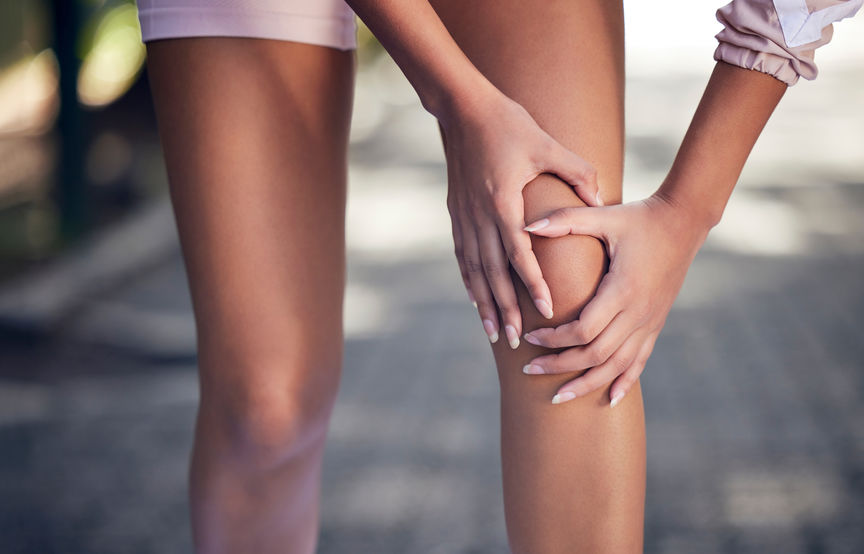
Hearing a clicking sound in your knee when you walk or go up and down the stairs can be disturbing. This is happening for several reasons, and it may or may not be a concern depending on whether you are experiencing any other symptoms along with the clicking. If you notice the clicking in your knee is becoming more frequent, and you are experiencing any of these symptoms, it may be time to get it evaluated:
- Pain
- Limited range of motion
- Swelling
- Locking
Common Causes of Clicking
Clicking in the knee can be caused by various medical issues. The most frequent reasons for these symptoms are:
Ligament Injuries: Ligaments are thick pieces of tissue that connect one bone to another. There are 4 major ligaments in the knee: ACL, PCL, MCL and LCL. If a ligament is torn, it can cause a decrease in stability in the knee. The clicking sound can be caused by the torn ligament “catching” as it moves over the bone.
Osteoarthritis: This “wear and tear” arthritis gradually diminishes cartilage, leading to pain, swelling, and inflammation.
Soft Tissue Injury: Trauma caused by an injury or surgery to the soft tissue structures in the knee can also be the source of clicking.
Meniscus Tear: The two c-shaped cushions between the thigh and shin bones act as shock absorbers and joint stabilizers for your knee. A tear in one or both of them can result in joint instability.
Patellofemoral Syndrome: This condition, also known as ‘runner’s knee,’ is common with runners and happens when the kneecap is misaligned and doesn’t glide smoothly in the bony groove in the thigh bone as it is supposed to. Misalignment can cause damage to ligaments, tendons, and cartilage, causing pain and clicking
Scar Tissue: The development of scar tissue is extremely common during the first year following surgery and is the reason for the clicking.
As you can see from the above descriptions, many causes of knee clicking have a lot to do with the knee’s soft tissue structures, joints, and bones, which cause instability in the knee.
Treatment Options
There’s more going on than just what you see on an X-ray. Reducing chronic inflammation and improving stability in the knee will also reduce pain and, ultimately, the knee clicking you may be experiencing. When deciding on a treatment option, it is also important to understand that the soft tissue and supportive structures around a joint are very important in terms of providing long-term structure and stability.
There are several non-surgical treatments that can be considered.
- Dextrose prolotherapy is the first-line regenerative medicine treatment that can be helpful for knee pain such as mild to moderate patellofemoral osteoarthritis. It can help with not only pain but also instability due to hypermobility and chronic instability in the knee cap and the knee joint.
- Platelet Rich Plasma is also helpful for moderate-level osteoarthritis in the knee.
- Bone marrow derived stem cells are also helpful for more moderate to advanced-level knee osteoarthritis and patellofemoral osteoarthritis.
The results to expect from these types of treatments generally include pain relief and functional improvement and getting back to a high quality of life. It’s important to note that these procedures might not necessarily yield visible improvements in imaging, such as X-rays, ultrasounds, or MRIs. However, if your objectives revolve around experiencing improved well-being and enjoying an enhanced lifestyle, these treatments can undoubtedly have a significant impact.